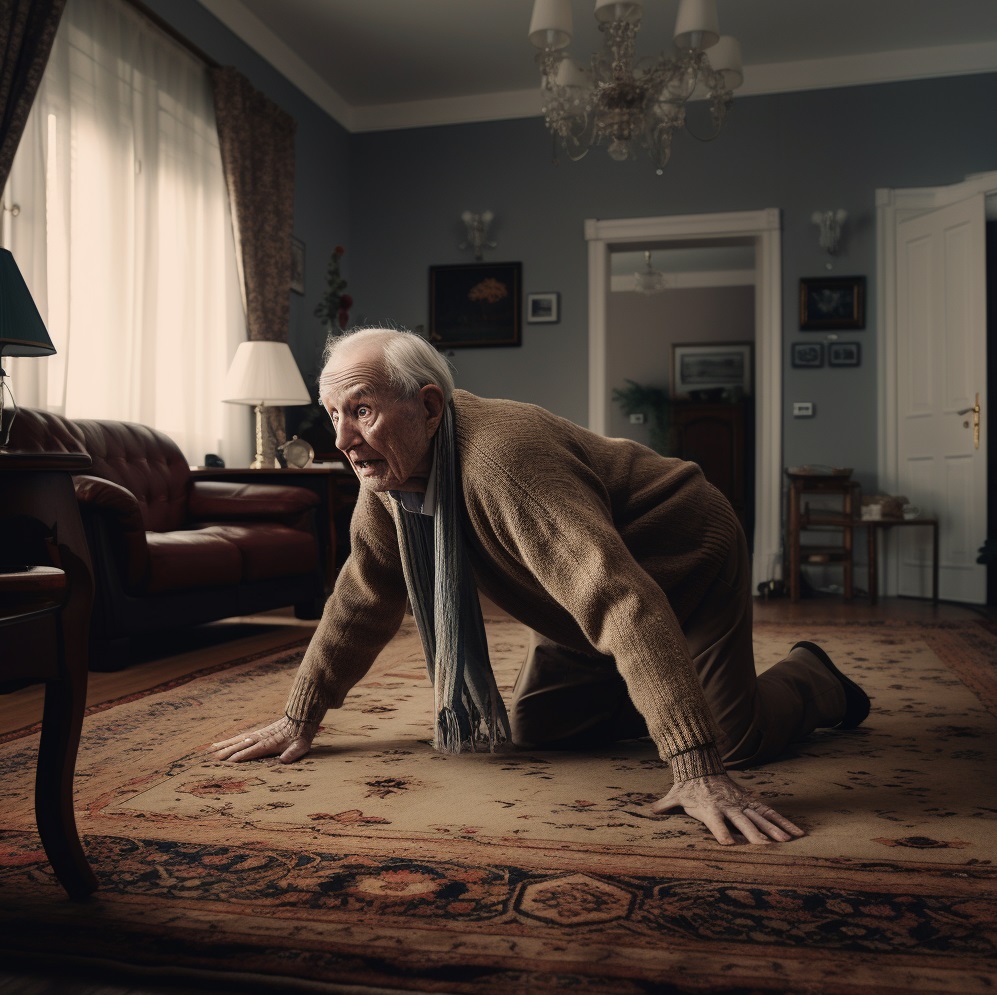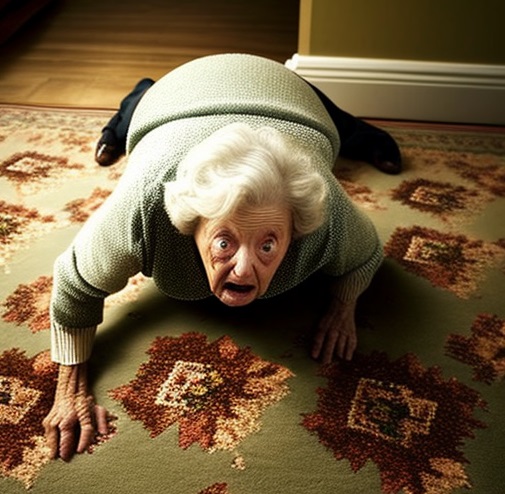We’re going to delve into a crucial issue that affects many older adults: falls and fractures. These incidents can have serious consequences, ranging from long-term disability to even death. However, falls and fractures are not an inevitable part of aging. By understanding the causes, risk factors, and implementing preventive measures, we can help older adults maintain their quality of life and independence. In this article, we will explore the various causes of falls in older adults, the effects of sarcopenia, and effective strategies for fall prevention and maintaining bone health.
Causes of Falls in Older Adults:
In this section, we will examine the various factors that contribute to falls in older adults. From age-related declines in physical abilities to underlying health conditions and environmental hazards, understanding these causes can help us take appropriate preventive measures.
- Age-related declines in eyesight, hearing, and reflexes
- Health conditions like diabetes, heart disease, thyroid issues, or problems with feet or blood vessels affecting balance
- Urgent need for bathroom use due to incontinence
- Mild cognitive impairment or certain types of dementia
- Sarcopenia (age-related muscle loss), balance and gait issues, and postural hypotension
- Foot pain or improper footwear
- Medications causing dizziness or confusion
- Home or community environment hazards
Preventing Falls:
Taking proactive steps to prevent falls is essential for older adults to maintain their independence and quality of life. This can be achieved through a combination of strategies, such as engaging in regular physical activity, addressing home safety concerns, and being mindful of factors that may contribute to falls, including medication side effects, sleep, and alcohol consumption. By following these guidelines, older adults can reduce their risk of falls and enjoy a safer living environment.
- Stay physically active with a suitable exercise program, including balance and strength training exercises
- Make home safety improvements to reduce fall hazards
- Regularly have eyes and hearing tested
- Be aware of medication side effects and discuss them with your doctor or pharmacist
- Get enough sleep and avoid or limit alcohol consumption
- Stand up slowly to prevent blood pressure drops
- Use assistive devices, such as canes or walkers, when necessary
- Take extra caution on wet or icy surfaces and keep hands free for support
- Choose proper footwear with nonskid, rubber-soled, low-heeled shoes
- Consider staying inside during inclement weather or utilizing delivery services
- Inform your doctor about any falls, even if no pain was experienced
Home safety:
A safe living environment is crucial in minimizing the risk of falls for seniors. By proactively addressing potential hazards and making necessary adjustments, older adults can create a secure and comfortable space that supports their independence.
- Address safety hazards in the home and community environment to reduce the risk of falls.
- Make modifications to your home, such as adding grab bars and improving lighting, to make it safer.
What to Do if You Fall:
In the event of a fall, it is important to know how to respond safely and effectively to minimize the risk of further injury. By remaining calm, assessing the situation, and following the appropriate steps to get up or seek help, older adults can better cope with the unexpected and protect their well-being.
- Breathe and relax
- Assess if you are hurt before attempting to get up
- Crawl to a sturdy chair if able to get up safely
- Slowly sit down in the chair
- Get help if injured or unable to get up independently
Maintaining Bone Health:
Promoting and maintaining bone health is essential for older adults, as it can help prevent fractures and improve overall well-being. By focusing on factors such as nutrition, exercise, and lifestyle choices, individuals can take control of their bone health and reduce the risk of falls and related injuries.
- Get enough calcium and vitamin D
- Engage in at least 150 minutes of physical activity per week
- Quit smoking and limit alcohol use
- Maintain a healthy weight
- Discuss osteoporosis with your doctor
Osteoporosis:
Osteoporosis is a common condition that increases the risk of fractures from falls. It’s essential for older adults to discuss this condition with their doctor and explore potential treatment options to protect their bone health.
- A disease that weakens bones, making them more susceptible to fractures even from minor falls.
- Speak with your doctor about osteoporosis and potential treatment options.
Sarcopenia and Its Effects:
Sarcopenia, a prevalent issue among older adults, is the age-related loss of muscle mass, strength, and function. Sarcopenia is a condition characterized by the progressive loss of muscle mass, strength, and function as people age. It can negatively impact an individual’s ability to perform daily activities and may lead to an increased risk of falls, fractures, serious injuries, and premature mortality. Factors such as poor nutrition and lack of exercise can exacerbate sarcopenia. In this section, we will explore the various effects of sarcopenia, how it impacts daily activities, and the factors that can exacerbate this condition.
- Decline in muscle mass, strength, and function
- Associated with weakness, fatigue, lower energy levels, and difficulty in standing, walking, and climbing stairs
- Increased risk of falls, fractures, serious injuries, and premature mortality
- Can be exacerbated by poor nutrition and lack of exercise
Balance issues, and postural hypotension:
Balance issues and postural hypotension are common challenges faced by older adults that can contribute to an increased risk of falls. By understanding these factors and implementing strategies to improve balance and manage blood pressure changes, seniors can work towards reducing their fall risk and maintaining their independence.
- Age-related muscle loss, or sarcopenia, can affect balance and gait, increasing the risk of falls.
- Postural hypotension, a drop in blood pressure when standing up, can also increase fall risk.
- Regular strength training and maintaining a healthy diet can help reduce sarcopenia.

Medications and fall risk:
Medications play a vital role in managing various health conditions, but they can sometimes contribute to an increased risk of falls in older adults. It’s essential to stay informed about potential side effects and work closely with healthcare professionals to ensure the safest medication regimen possible.
- Some medications can cause dizziness or confusion, increasing the likelihood of falls.
- Discuss any side effects with your doctor or pharmacist and adjust medications if necessary.
Vision and hearing:
Good vision and hearing are key factors in maintaining balance and preventing falls. Regular check-ups and appropriate interventions can help older adults address any impairments, allowing them to navigate their surroundings with confidence.
- Regular eye and hearing exams can help identify any issues that may contribute to fall risk.
- Wear eyeglasses or contacts as advised and ensure hearing aids fit well.
Sleep and alcohol consumption:
Lifestyle choices, such as prioritizing sleep and managing alcohol consumption, can have a significant impact on fall risk. By adopting healthy habits, seniors can optimize their physical and mental well-being, reducing the likelihood of accidents and falls.
- Adequate sleep is essential for preventing falls, as tiredness can lead to accidents.
- Limit alcohol consumption to avoid balance problems and falls.
Assistive devices:
Utilizing assistive devices can greatly enhance stability and independence for older adults, reducing their risk of falls. It’s important to select the right device and receive guidance from healthcare professionals to ensure optimal use and safety.
- Canes, walkers, and other assistive devices can help provide stability and prevent falls when used correctly.
- Consult with a healthcare professional to ensure proper device size and usage.
Proper footwear and walking on slippery surfaces:
The right footwear and cautious behavior on slippery surfaces can make all the difference in preventing falls. By choosing appropriate shoes and taking extra care in challenging conditions, older adults can navigate their environment more safely.
- Choose supportive, non-skid, and low-heeled shoes to reduce fall risk.
- Take extra caution when walking on wet or icy surfaces, and consider using ice melt products or sand for added traction.
Emergency preparedness:
Being prepared for emergencies is crucial for older adults, as quick assistance can minimize the consequences of falls. Establishing a reliable communication network and having accessible emergency resources can provide peace of mind and expedited help when needed.
- Keep a charged phone nearby at all times, and establish daily contact with a family member or friend.
- Consider using an emergency response system or a smartwatch with a built-in emergency call feature.
Importance of reporting falls to your doctor:
Open communication with healthcare providers about any falls is crucial in developing personalized prevention strategies. Reporting all falls, even those without apparent injury, can help doctors recommend appropriate interventions to minimize future risks.
- Always inform your doctor of any falls, even if they did not result in pain or injury.
- Your doctor may recommend additional interventions, such as physical therapy or a walking aid, to help prevent future falls.
National efforts to reduce falls in older adults:
Collaborative efforts, such as the Falls Free® Initiative, aim to promote effective fall prevention strategies on a national scale. By raising awareness and supporting evidence-based programs, these initiatives work to protect the health and independence of older adults.
- The National Council on Aging leads the Falls Free® Initiative, a national effort promoting effective fall prevention strategies.
- The initiative involves over 70 national organizations and aims to increase public awareness and support the implementation of evidence-based fall prevention programs.
Conclusion
In conclusion, falls and fractures pose a significant risk to older adults, but they don’t have to be an unavoidable part of the aging process. By understanding the various causes and risk factors, we can take preventive measures to help our loved ones maintain their independence and quality of life. Remember, a proactive approach to fall prevention can go a long way in ensuring the safety and well-being of older adults. So let’s all do our part in supporting the seniors in our lives by making their environment safer and helping them stay active, healthy, and on their feet.
References:










